Few nations are blessed with genius minds, few geniuses are fortunate to have like-minded leaders, and few leaders are fortuitous to have the resources to propel the geniuses to new heights. India can be counted as the most fortunate nation during its time of independence that it got scientific leaders like Homi Jehangir Bhabha, who was not only one of the best minds of his time but also acted as a shade to the whole generation of Indian scientific community and their works.
Today, we honour Homi J. Bhabha, a remarkable genius and visionary scientific organizer whose life included a tragic chapter that we remember with reverence. On January 24, 1966, the Indian scientific community faced a profound loss with the untimely passing of one of its most brilliant minds in a tragic plane crash. Yet his unparalleled legacy continues to inspire generations.
Early age and Education
Bhabha, celebrated as the pioneer of the Indian Nuclear Program, was born into a distinguished Parsi family on October 30, 1909. Just as a tree flourishes based on the richness of the soil it grows in, Bhabha's intellectual and creative pursuits were profoundly enriched by his access to his aunt Meherbai Tata's extensive library. From an early age, he encountered the masterpieces of Beethoven, Mozart, Haydn, and Schubert, igniting a passion for classical music that would shape his artistic journey. His self-portrait, awarded second place at the Bombay Art Society Exhibition, showcased his multifaceted genius and remarkable artistic talent.
At just 15 years of age, Homi J. Bhabha achieved remarkable success by passing the Cambridge Examination with honours. Since he was too young to attend college overseas, he decided to enroll at Elphinstone College in Mumbai. This outstanding accomplishment showcases the extraordinary talent Bhabha exhibited from a young age.
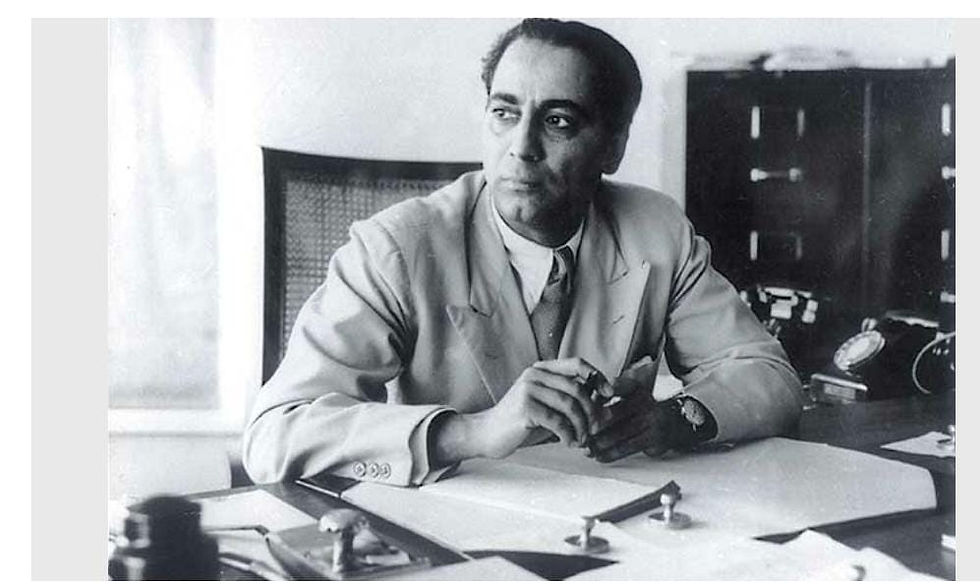
He later attended Cambridge University for further studies, where his parents encouraged him to pursue Mechanical Engineering, hoping he would join Tata Steel in the future. But just as the rising sun cannot be held back, Bhabha followed his passion for mathematics. Throughout his lifetime, he authored more than 50 papers on High Energy Physics and emerged as one of the pioneers in the early development of Quantum Electrodynamics.
In 1935, Bhabha completed his doctorate on the topic "On Cosmic Radiation and the Creation and Annihilation of Positrons and Electrons." That same year, he became the first person to calculate the cross-section of Electron-Positron Scattering, a groundbreaking contribution later named Bhabha Scattering in his honour.
As if these achievements weren't extraordinary enough, Bhabha also played a key role in the early research on mesons and contributed significantly to naming them. He was the first to propose that studying the properties of mesons would serve as a cornerstone for experimentally validating the Time Dilation theory presented by Albert Einstein in his renowned Theory of Relativity.
The Clouds of War
As 1939 became the year that left no one unaffected, Bhabha was also not an exception in this matter. He came to India for vacation but was forced to stay due to the world war reaching it’s peak.
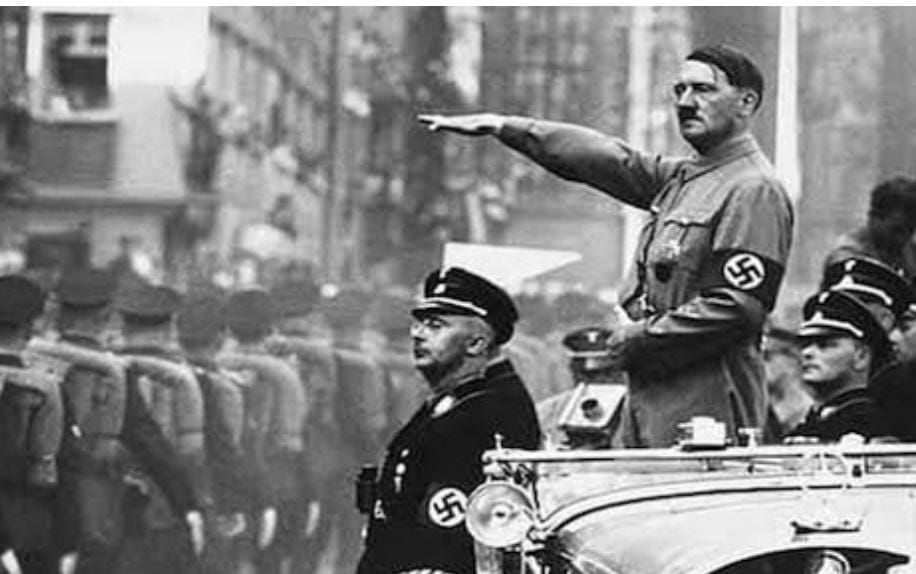
During this pivotal period, India was not only striving for independence but also establishing a stronghold in scientific advancement at the esteemed Indian Institute of Science (IISc) in Bangalore, guided by the illustrious C.V. Raman. In 1940, Homi J. Bhabha took on the role of Reader in Physics at IISc, where he pursued his innovative research in experimental cosmic ray physics, backed by the Sir Dorabji Tata Trust. The subsequent year saw him becoming the first Indian recipient of the Adams Prize. At the annual gathering of the Indian Academy of Sciences, Nobel Laureate C.V. Raman hailed the young Bhabha as "the modern equivalent of Leonardo da Vinci." That same year, Bhabha was elected as a Fellow of the Royal Society, marking yet another extraordinary achievement in his distinguished career.
A Meeting Of Destiny
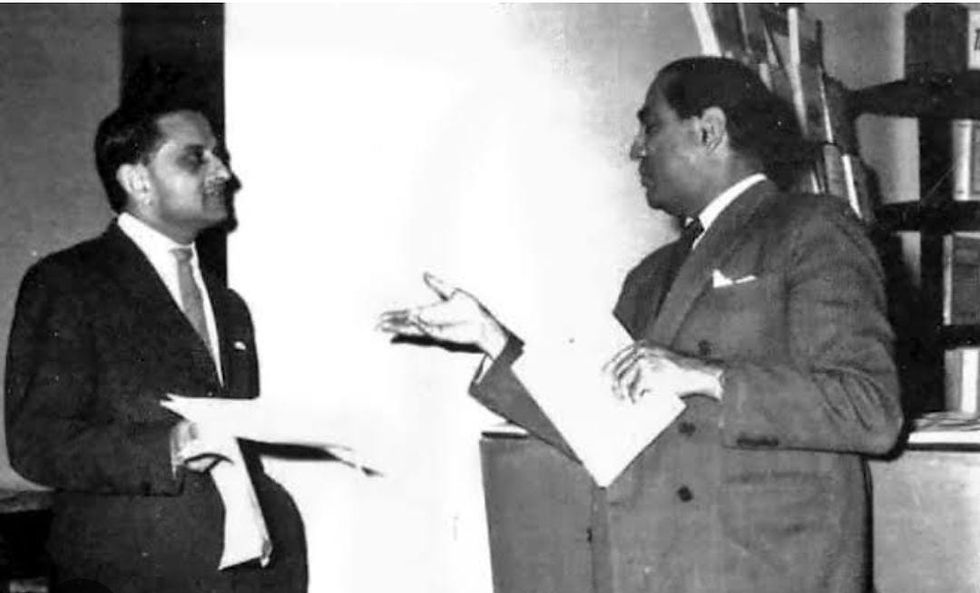
Bhabha was eager for the war to end so he could go back to Cambridge when a fateful encounter altered India's history forever. He changed his mind and chose to remain in India after meeting Vikram and Mranalini Sarabhai in Bangalore and growing to appreciate Indian architecture and heritage. The India we live in today was made possible by this collaboration.
Changing the Fate of Nation
Bhabha's role as a father figure and mentor to all Indians interested in fundamental research began in 1943 when he persuaded J.R.D. Tata to provide funding for the Indian Institute of Fundamental Research and wrote to physicist Subrahmanyan Chandrasekhar to "bring together as many outstanding scientists as possible."
In June 1945, Bhabha founded the Tata Institute of Fundamental Research through his tireless efforts, and he continued to serve as its director until his death.
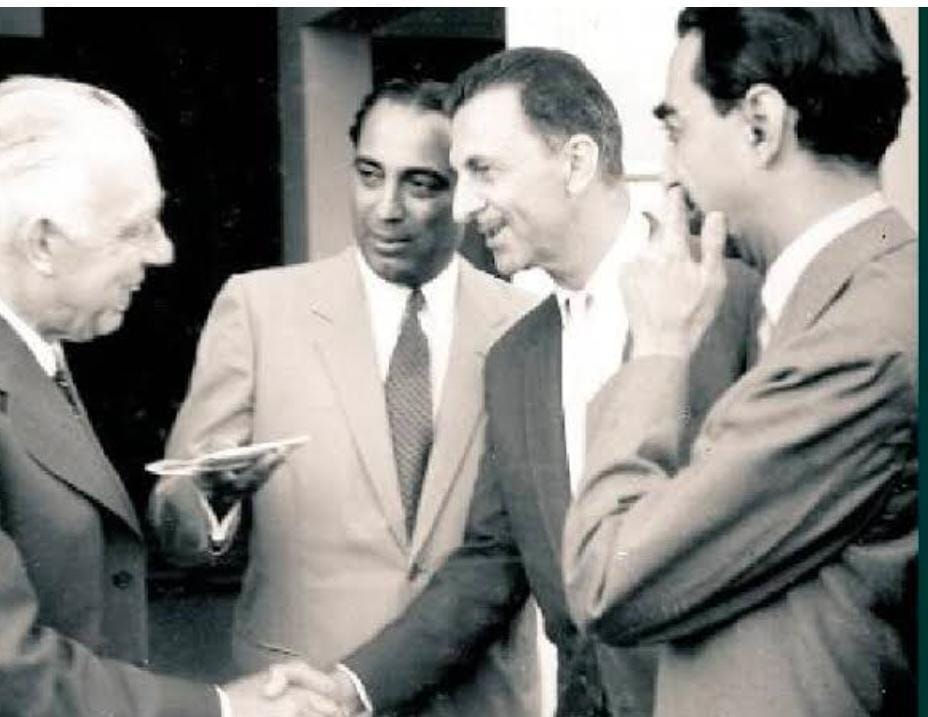
Nuclear Energy Program
The world was forever altered by the bombings of Hiroshima and Nagasaki. Under the new power structure, countries were seen as either possessing nuclear power or not, and an arms and space race was about to start. The Cold War between the USSR and the USA had split the world into two blocs. In the midst of this crisis, on April 26, 1948, Bhabha wrote to then-prime minister Jawahar Lal Nehru to persuade him that we needed our own nuclear program. This letter opened the way for the creation of the Atomic Energy Commission (AEC), of which Bhabha was named its first chairman.
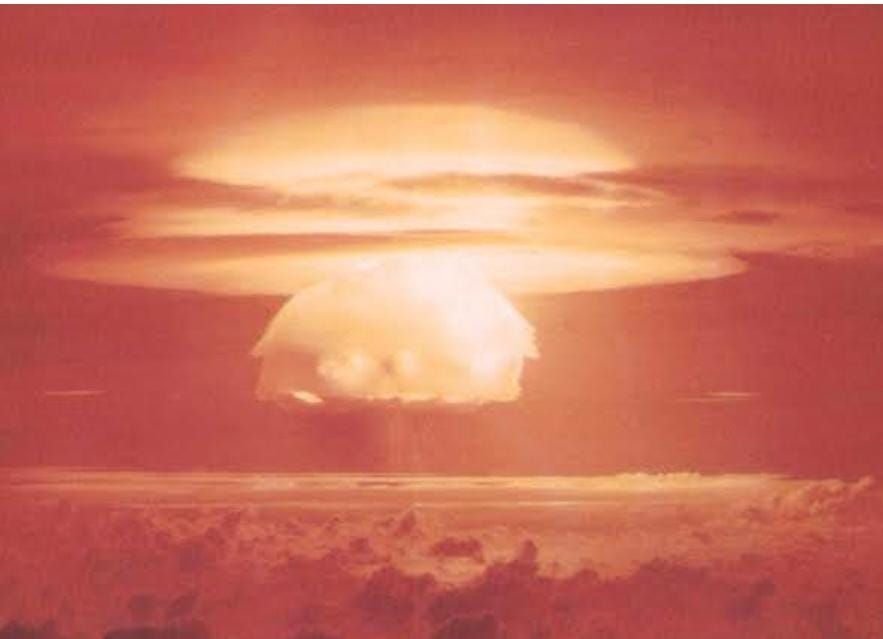
This marked the inception of the Indian Nuclear Programme, but Bhabha soon realized the need for a separate entity beyond TIFR to effectively manage the nuclear mission. This led to the establishment of a separate 1200-acre campus known as ‘The Atomic Energy Establishment Trombay (AEET), which commenced operations in 1954.
In August 1956, Homi J. Bhabha kept his promise, and India proudly became the first Asian nation, alongside the USSR, to establish its own nuclear reactor, APSARA.

His ambition to formulate the country's nuclear program using the vast reserves of thorium instead of uranium captured the attention of the global nuclear scientific community and world leaders alike. In 1950, Bhabha proudly represented India at the International Atomic Energy Agency conference. He later took on the esteemed role of president at the United Nations Conference on the peaceful use of atomic energy in Geneva, Switzerland, in 1955.
Bhabha demonstrated his visionary mindset in geopolitics by asserting that India had reached a pivotal point in its Nuclear Programme, capable of developing weapons if necessary, particularly in response to indications of a potential Chinese Nuclear Programme.
Indian Space Programme
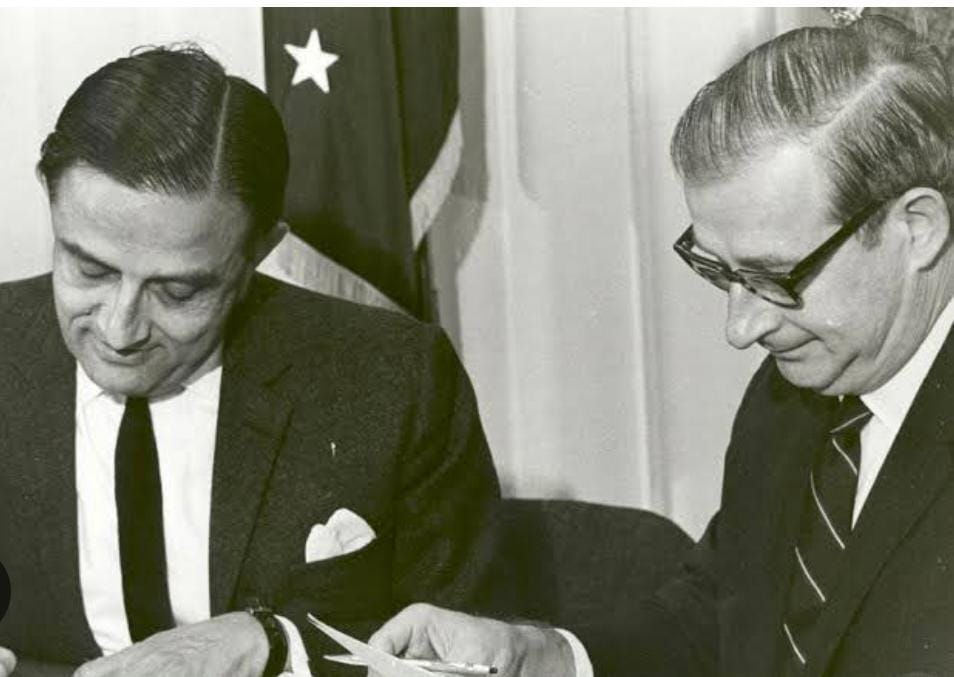
The remarkable friendship between two visionary leaders, Homi J. Bhabha and Vikram Sarabhai, illuminated India's journey in unprecedented ways. Today, ISRO stands as the crown jewel of India's accomplishments, yet many remain unaware that this groundbreaking organization was conceived by these two pioneering figures, famously referred to as 'The Rocket Boys.'
In his renowned letter to Nehru, Bhabha expressed, “Only science can address the issues of hunger and poverty, insanitation and illiteracy, superstition and oppressive customs and traditions, the wastage of vast resources, or reach a nation populated by starving individuals who, in fact, could benefit from science today." At every turn, we must seek its assistance; the future is destined for science and those who embrace it.
The letter successfully sowed the seeds of every scientific development we witness today, paving the way for the establishment of new institutions, including the ‘Centre for Research and Development in Space Sciences’ spearheaded by Dr. Vikram Sarabhai.
In February 1962, just a few months after the launch of the Soviet Union's first satellite, Sputnik, Bhabha established the Indian Committee for Space Research (INCOSPAR), with Sarabhai appointed as chairman—a forerunner to today's ISRO. The dynamic duo of Bhabha and Sarabhai served as guiding mentors to emerging scientists, nurturing future pioneers like Dr. A.P.J. Abdul Kalam.
Moving closer to yet another milestone In November 1963, India made history by launching its first rocket from the Thumba Equatorial Rocket Launching Station (TERLS). The launch signified the dawn of India’s space era.
The Day That Arrived Too Soon
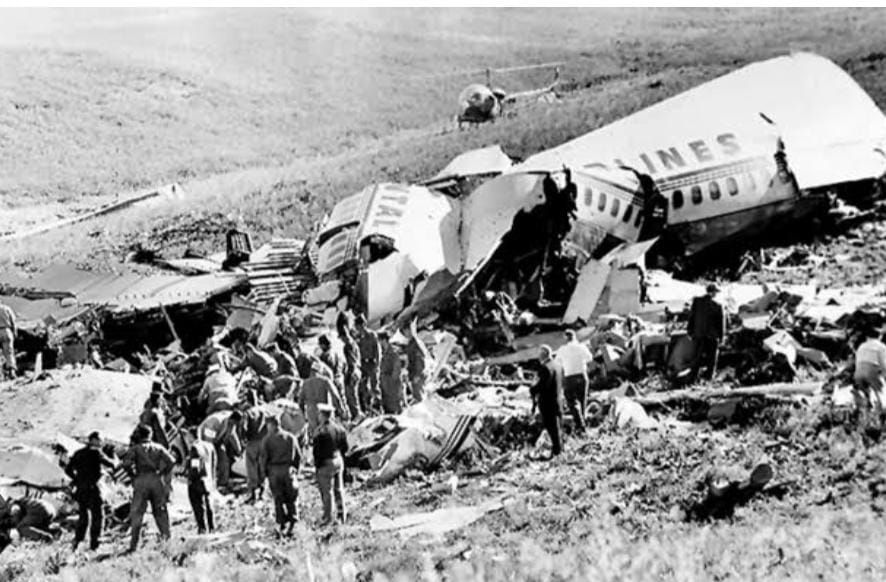
Having penned countless words celebrating this captivating figure, I find my hands trembling as I recount the sorrowful day when the remarkable Homi Jehangir Bhabha departed from this world in the most heartbreaking manner imaginable. An Air India flight tragically crashed near Mont Blanc in France, resulting in the loss of all 117 lives on board, including the notable Homi J. Bhabha. The accident was shrouded in theories of potential conspiracy regarding the orchestrated assassination of Bhabha, a notion that seemed unsurprising amid the tumultuous backdrop of the Cold War.
The loss of Homi J. Bhabha had an immeasurable impact on India. His passing brought a standstill to the scientific advancement that India was pursuing, leaving the Indian scientific community without its guiding patriarch.
India’s Way of Honouring its Pioneers
Unfortunately, a huge legacy has failed to appropriately recognize one of the country's best scientists of the previous century—Dr. Homi J. Bhabha—in a country that continuously brags about its past achievements in the fields of knowledge and invention. Even though India is very proud of its long history of scientific and intellectual accomplishments, it has yet to give him the greatest civic honor that he so richly deserves. It is perplexing that such a significant scientist, whose foresight and innovative work paved the way for the country's nuclear capabilities and international scientific recognition, is still awaiting the long-overdue recognition.
Yet, despite this glaring oversight, Bhabha never waited for appreciation, nor did he concern himself with criticism. His single-minded focus on his work was unwavering, and the monumental legacy he left behind is a clear reflection of his unmatched dedication to the advancement of science and technology. His contributions continue to inspire generations, acting as a beacon of brilliance and commitment.
''My success will not depend on what A or B thinks of me; my success will be what I make of my work.''
Bid adieu, legend.


Greatest work for country
" My success will not depend what others think of me, my success will be what I give to society " so nice words. Congrats for suming up this informative write up in a lucid and easy to understand form....so great.